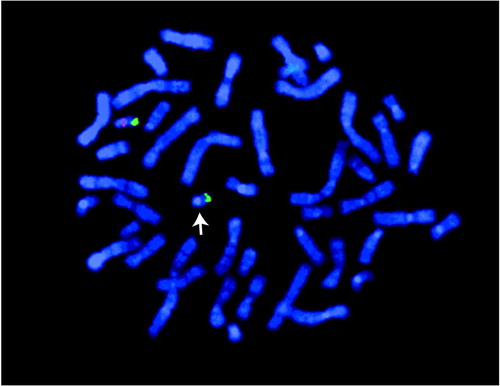The Human Genome: Chromosome 22q11 Deletion Syndrome
Deletion of chromosome 22q11.2 is the most frequent known interstitial deletion found in humans. The deletion has been associated with a highly variable phenotype that occurs in many combinations and with widely differing severities. This composite microdeletion syndrome encompasses DiGeorge syndrome, velocardiofacial (or Shprintzen) syndrome, conotruncal anomaly face, and isolated conotruncal anomalies as the most common disorders. The full disorder is referred to as 22q11 deletion syndrome. In addition to the numerous structural malformations associated with gene deletions at the 22q11 chromosome, developmental delay, learning disability, and neuropsychiatric disturbances are common. Many studies have reported a greater incidence of psychotic illness (schizophrenia or bipolar disorder) in adults with 22q11 deletion syndrome, and deletions in the 22q11.2 chromosome have also been found in 2%–3% of individuals with schizophrenia, predominantly in patients with childhood-onset schizophrenia. Most patients with velocardiofacial syndrome or DiGeorge syndrome have overlapping deletions on one chromosome 22q11, which suggests that a lower copy number of the same genes may be responsible for the etiology of these diseases.
Fluorescent in situ hybridization is the technique in widespread use to detect these deletions in individual chromosomal preparations. A fluorescently labeled DNA or RNA probe is hybridized to immobilized metaphase chromosomes prepared from a blood sample. These types of molecular cytogenetic techniques are routinely used to diagnose human behavioral disorders due to chromosomal rearrangements (deletions, translocations, and insertions) and will be increasingly applied in the future as additional genetic illnesses are established.
Address reprint requests to Dr. Tamminga, Maryland Psychiatric Research Center, University of Maryland, P.O. Box 21247, Baltimore, MD 21228; [email protected] (e-mail). Image courtesy of the authors.

Figure. Chromosome 22q11 Deletion Syndrome
Fluorescent in situ hybridization image showing the deletion of chromosomal region 22q11, which causes chromosome 22q11 deletion syndrome. DNA probes were used to highlight the regions of metaphase chromosome 22 in a 2-year-old patient with DiGeorge syndrome. The white arrow in the figure indicates the area of deletion, in which the absence of the orange-pink hybridization signal is obvious; chromosome 22 is identified by a control probe that hybridizes to the end (telomeric region) of the long arm of chromosome 22 (blue-green signals).



